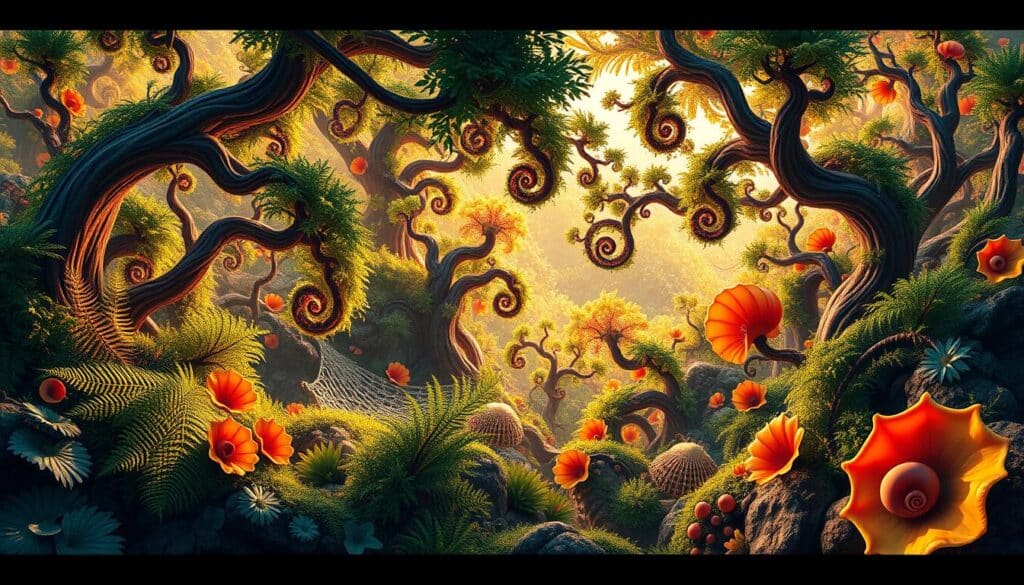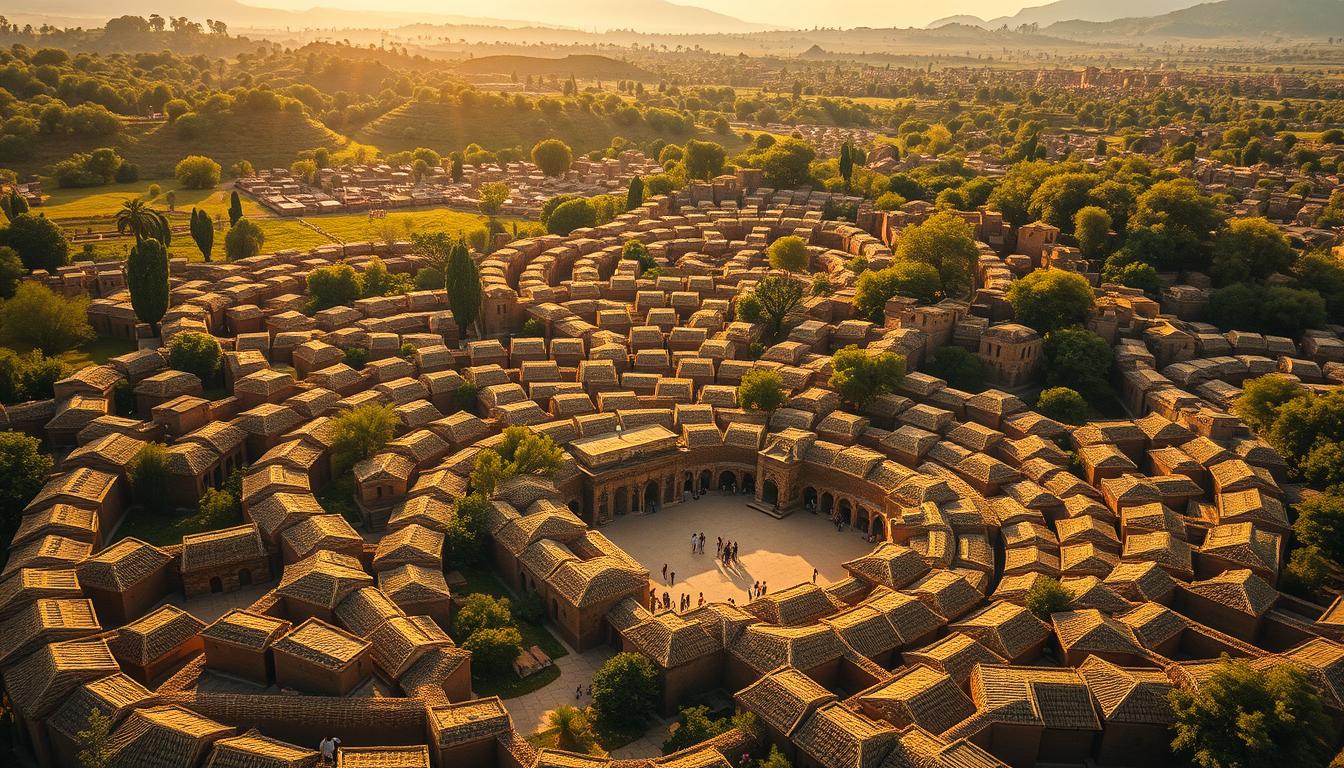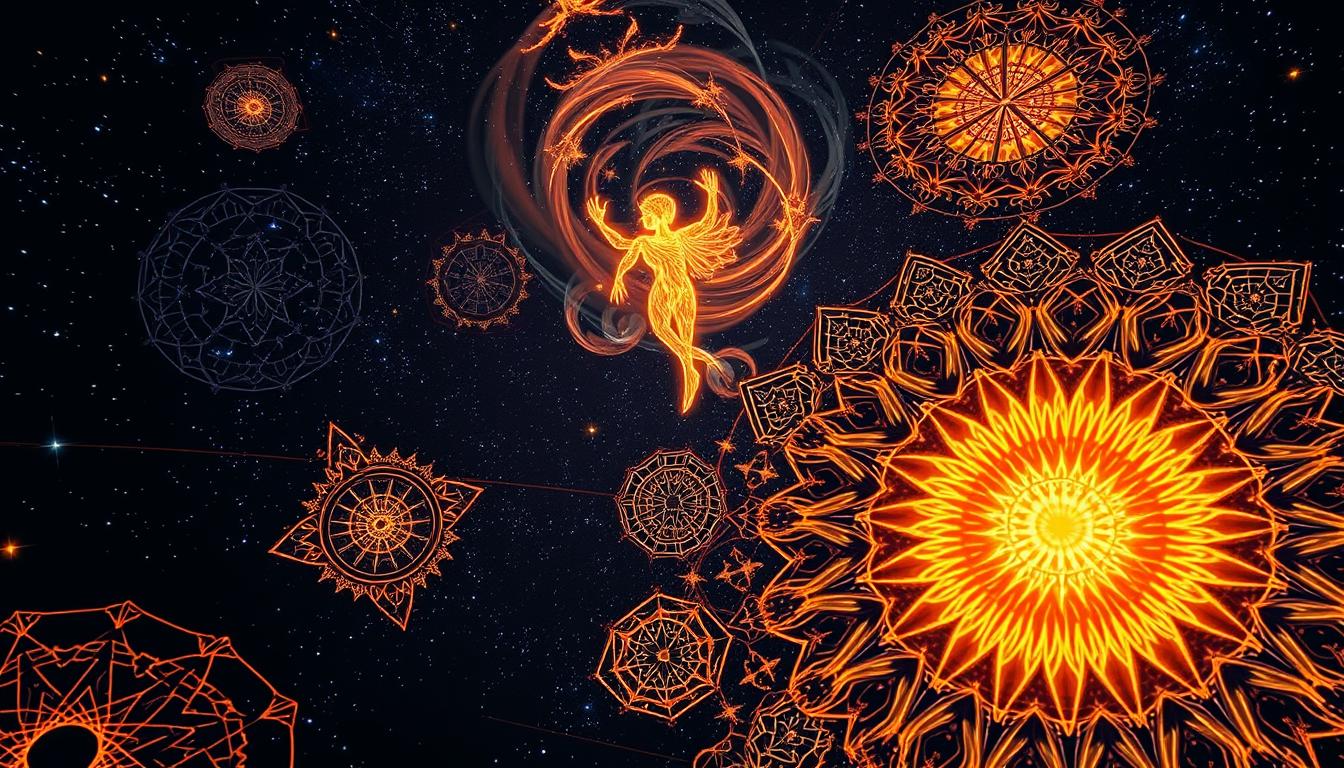Fractals and indigenous conservation show a deep grasp of sustainability and life’s patterns. Fractals are structures with patterns that repeat on different scales. They shed light on how everything in nature is connected.
Indigenous methods of keeping nature use these ideas to protect their way of life and manage resources well. Using fractal principles helps tackle environmental issues with respect for ancient wisdom.
Understanding Fractal Geometry
Fractal geometry studies complex shapes and patterns that repeat across scales. This math branch shows how nature’s designs appear in many forms. It offers insight into the complex systems found in the natural world. Examples like river networks and the way trees branch out show these fractal patterns. They play a key role in environmental science.
What is Fractal Geometry?
Fractal geometry deals with shapes that, when divided, each part looks like the whole. These shapes follow simple math rules and repeat at different sizes. This makes them crucial for studying natural forms. Using fractal geometry, scientists can figure out how complex shapes develop. This affects ecosystems and how they work.
The Importance of Scale in Nature
Understanding scale is crucial in ecology. It helps researchers see how organisms interact and energy moves in an ecosystem. Nutrient cycles and how species interact show different patterns on large and small scales. Recognizing these patterns helps in conservation efforts. This leads to healthier ecosystems.

Bioregions and Their Fractal Nature
Bioregions combine ecology and geography in an interesting way. They show how different parts of our world connect. Each bioregion has its own natural features and follows a fractal pattern. This means they are made of smaller parts that look like the whole. Knowing this helps us see how bioregions work together.
The Hierarchical Definition of Bioregions
Bioregions are like big puzzles made of ecosystems. They fit into even bigger ecological pictures. This setup lets us break bioregions into smaller parts without losing sight of the whole area. It shows us nature’s complexity, which is similar to fractals.
Interconnected Boundaries in Ecological Systems
Bioregion borders are shaped by nature, like rivers and weather patterns. These borders link different areas, allowing animals and plants to interact. This connection makes ecosystems stronger and better at overcoming environmental problems.
Indigenous Knowledge and Conservation
Indigenous Knowledge is key in creating lasting conservation methods, highlighted by Traditional Ecological Knowledge (TEK). TEK includes a deep understanding of ecosystems, learned by indigenous peoples over many generations. It’s grounded in their unique culture and spiritual ties to the land and resources. This wisdom helps guide today’s efforts in conserving our environment.
Traditional Ecological Knowledge (TEK)
Traditional Ecological Knowledge combines long-observed practices, beliefs, and a close bond with nature. It includes skills like managing resources in ways that keep biodiversity and ecosystem health strong. TEK is crucial for grasping ecological connections that might slip past modern science.
The Role of Culture in Conservation Practices
Culture deeply affects how indigenous people approach conservation. Their traditions inform the ways they relate to their surroundings, impacting sustainability directly. Bringing cultural values into conservation plans strengthens the mutual care between indigenous communities and their ecosystems. This boosts joint efforts to protect our natural heritage for those who come after us.
Integrating Fractal Principles into Modern Indigenous Conservation Efforts
Using fractal principles in managing resources is a game-changer for indigenous conservation. These principles show patterns that repeat, similar to what we see in nature. They help indigenous people create plans that protect their local environment and consider the bigger picture.
Applying Fractals to Resource Management
Fractals help us fully understand how nature’s pieces fit together. They make it clear that actions at one level affect everything else. Indigenous managers use these ideas to better adapt their strategies, connecting old wisdom with new methods.
Benefits of Fractal Approaches in Sustainability
Fractal methods are powerful in maintaining our planet. They offer a complete view that helps communities use resources wisely. This way, indigenous efforts to conserve are stronger and smarter, preserving their culture while protecting nature.
Nested Scales and Their Ecological Significance
Nested scales are key to understanding ecosystems. They show how small and large bioregions are linked. These connections show the big impact small parts can have on the whole environment. By knowing about these scales, we can see how small changes affect big networks.
Small-Scale Systems Reflecting Larger Ecosystems
Small systems often act like big ones, showing similar patterns. A pond, for example, can be as diverse as a lake. This shows why we need to protect small ecosystems for the health of the whole.
Adaptive and Resilient Bioregions
Nested scales make bioregions tough and adaptable. Forests and wetlands, for example, can handle changes while keeping balance. Their ability to recover shows their key role in protecting nature and traditional ways of using resources.
Dynamic Relationships in Conservation
The idea of dynamic relationships in conservation shows how different areas of nature are connected. It mixes ecology with human studies. Knowing about these relationships helps us make better plans to protect nature. It points out how nature and human actions affect each other. This understanding helps us live better with our surroundings.
Feedback Loops Across Bioregions
Feedback loops show how something happening in one place can affect many others. These loops happen in many ways:
- Changes in land use affecting local biodiversity.
- Pollution from human activities disrupting nearby ecosystems.
- Conservation efforts in one area enriching the ecological health of surrounding regions.
This mix of human actions and natural processes makes us think broadly about saving nature. It tells us to reduce bad effects while improving good ones in different areas.
Human and Environmental Interactions
How people and nature interact changes both the environment and how communities thrive. Key factors include:
- The role of traditional ecological knowledge in sustainable practices.
- Community engagement in monitoring environmental changes.
- The impact of urbanization on rural ecosystems.
Understanding these interactions leads to better conservation methods. These methods consider both nature and people’s needs. Seeing conservation as a joint effort guides us towards solving environmental problems effectively.
Challenges in Conservation Efforts
Conservation challenges have long been complicated by power imbalances. These imbalances play a big role in land use and resource management decisions. Often, Indigenous communities lose out in negotiations.
This leads to struggles over land rights and conservation methods.
Power Imbalances between Stakeholders
Different groups come together in conservation efforts. These include government bodies, non-profits, and private investors. Each has a different level of power.
Such disparities can harm Indigenous communities by silencing their voices. Making conservation fair means addressing these imbalances.
Trust and Knowledge Transfer in Indigenous Communities
Working with Indigenous groups sometimes faces trust issues. This makes sharing knowledge hard. To make conservation work, there must be respect for Indigenous Knowledge.
Long-term relationships help build trust. They also make sharing important ecological knowledge easier, boosting conservation success.
The Need for Holistic Conservation Strategies
To create effective methods, we need holistic conservation strategies. These consider the connection between all parts of an ecosystem. This way, we can protect biodiversity and meet both community needs and environmental goals.
Fractal Definitions Promoting Comprehensive Understanding
Fractal definitions help us fully understand ecosystems. They show how everything is related across various levels. This view lets conservationists see both nature and human societies in detailed complexity.
Addressing Structural Issues in Conservation
Holistic conservation strategies must tackle structural problems too. Recognizing obstacles helps devise solutions that benefit both nature and people. This leads to stronger partnerships and more effective conservation efforts.
Success Stories: Case Studies of Fractal Approaches
Community-driven efforts are key to making conservation work well, especially with a fractal touch. These tales show us how local folks use their own wisdom to solve tough environmental puzzles. Adding fractals helps us better get the picture of how nature behaves.
Community-Led Initiatives in Indigenous Conservation
In many places, local actions show the strength of fractal ideas for green success. Take the Mi’kmaq Nation, for example. They blended ancient nature know-how with new-age green strategies. These efforts shine a light on how making choices locally helps keep our planet rich in life.
Comparative Analysis of Different Conservation Models
Looking at various conservation ways, the ones run by communities often win out. These methods are more successful than old-school, top-down plans. Places that work together and let everyone help manage natural resources do better. It makes folks feel they truly have a stake in keeping the environment safe, leading to lasting positive changes.
Conclusion
Bringing fractal principles into indigenous conservation marks a big leap towards better sustainability and saving cultural heritage. This method offers a deep look at the connections within ecosystems. It helps communities handle environmental challenges better.
Fractal geometry is key in showing nature’s complexity. It uncovers the close links in different natural areas.
Using fractal concepts in traditional conservation points out the need for teamwork and open-mindedness. Mixing age-old ecological knowledge with new conservation plans can make sustainability efforts stronger. It not only values indigenous wisdom but also makes the conservation work richer, leading to tougher ecosystems.
In the end, it’s crucial to grasp and use fractal concepts for new conservation strategies. Acknowledging the importance of these ideas helps us aim for a future where sustainability and cultural identity grow together. This ensures nature’s safety for the next generations.



